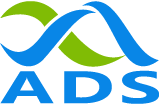Human immunodeficiency virus (HIV) type 1 is the major virus type that can lead to acquired immunodeficiency syndrome (AIDS). It is estimated that 37.9 millions of people are infected with HIV. Patients with HIV are currently treated with a combination of antiretroviral drugs and the death rate has been significantly reduced. That is great! However, drug resistance can be developed during the therapy due to the high mutation rate of the RNA virus. For instance, many mutations lie in the HIV pol gene that encodes viral protease, reverse transcriptase, integrase and other proteins. These mutations abolish drug functions against HIV DNA production and virus replication. Drug resistance mutations (DRMs) testing allows the selection of right therapy with optimized virologic response in people with HIV.
Drug resistance mutations are routinely detected by Sanger sequencing
DRMs testing, an assay called genotyping, is to find allele variants in specific gene regions. The HIV therapy guidelines recommend genotyping in routine clinical practice. The current standard method for HIV DRMs genotyping is Sanger sequencing, although other methods such as DNA hybridization and Next Generation of Sequencing (NGS) are also used. Sanger sequencing allows detection of DRMs present in at least 20–30% of the viral population. Commercial HIV drug resistance mutation detection kits such as TruGene and ViroSeq are FDA-approved HIV-1 genotyping products, but the home -brew Sanger sequencing methods widely used in clinical labs are more cost-effective and flexible.
Flexibility and cost-effectiveness of home-brew Sanger sequencing methods
Sanger sequencing methods developed in individual labs allows great flexibility in term of Sanger sequencing reagents and protocols used as well as the selection of sequencing regions based on the needs. The home-brew assays need to be validated in its own CLIA lab before use for diagnostic purpose. These assays can also be sold at a more reasonable price to other labs for validation and testing without FDA’s approval. One of major costs of developing these assays in clinical labs is the cost of Sanger sequencing reagents, especially the cycle sequencing reaction kits. AdvancedSeq’s Sanger sequencing reagents are developed to meet the needs of reducing costs while maintaining high sequencing quality.
NGS methods for HIV drug resistance genotyping
Recently, a few research labs have published papers on comparing Sanger sequencing and NGS for HIV drug resistance genotyping. Both methods can accurately detect mutations at a threshold of 20%. The advantage of NGS is its ability to identify low frequency mutations (the threshold at 5%, for instance) in the viral population missed by Sanger sequencing. Although the clinical relevance of these low-frequency mutations are difficult to interpret, an NGS detection method, Sentosa SQ HIV genotyping assay, has recently been approved by the FDA. It seems that NGS for HIV drug resistance testing is a trend, but Sanger sequencing may remain to be the standard method for a while unless the clinical necessity, cost, and turn-around time are justified in majority of labs, and the stanardization of NGS is available from inter-communication of many NGS groups who work diligently on HIVDR genotyping. Although two symposia in 2018 and 2019 have made progress to push NGS as a future standard for HIVDR, there is still a lot of work to do to achieve the ideal NGS assay.
Contact us to experience it yourself and let us know your thoughts.
